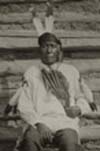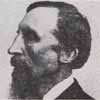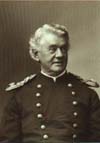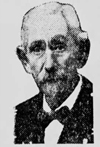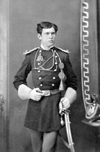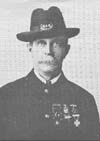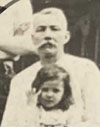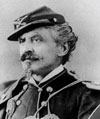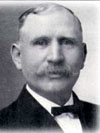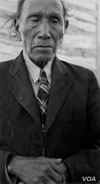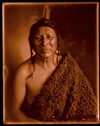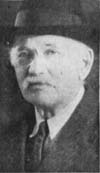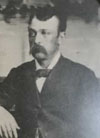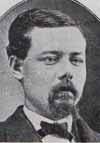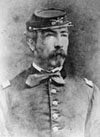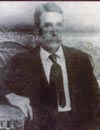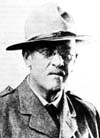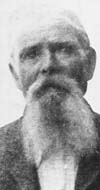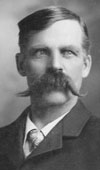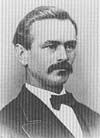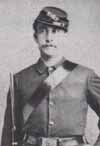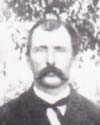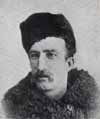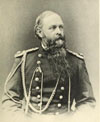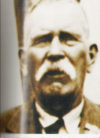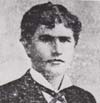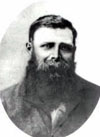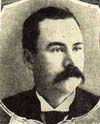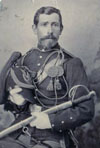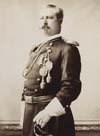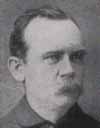Hugh Neal Moore died on September 3, 1900, in Washington, D.C., and was buried in the Soldiers’ Home National Cemetery there. He was a Private in Company M who participated in the valley and hilltop fights.
Donald McIntosh (left) was born in Quebec, Canada, on September 4, 1838. He was the First Lieutenant in command of Company G during the battle and was killed during the valley fight of the Battle of the Little Bighorn.
Francis M. Reeves died on September 4, 1902, in Washington, D.C. He was a Private in Company A who was wounded twice in the retreat from the valley fight.
Charles Ackerman was born in Baden, Germany, on September 5, 1848. He was a Private in Company K who was not present at the battle due to detached service at the Powder River Depot.
Samuel Berryhill Severs died on September 5, 1919, in El Dorado, Arkansas, and was buried in Woodlawn Cemetery in El Dorado, Arkansas. He was a Private in Company H who was wounded in the hilltop fight.
William Hall Shields died at Fort Sill, Oklahoma, on September 6, 1888, and was buried in the Post Cemetery there. He was a Private in Company E who was wounded in the hilltop fight during the battle.
John A. Bailey, who was also known as John Edward Bailey, married Margaret Katherine Johnson (1840-1919) on September 6, 1894. They had a daughter named Florence in St. Paul, Minnesota, in 1899. He was a Saddler with Company B who was with the pack train and in the hilltop fight.
George A. Bott died on September 8, 1883, in Little Rock, Arkansas, and was buried in the Oakland and Fraternal Historic Cemetery Park there. He was a Private in Company A who participated in the valley and hilltop fights.
Strikes Two (left) died on September 8, 1922, in Elbowood, North Dakota, and was buried in the Indian Scout Cemetery in McLean County, North Dakota. He was an Arikara Scout who crossed the river with Reno’s Column.
Patrick McDonnell died in San Antonio, Texas, on September9, 1922, and was buried in the Calvary Catholic Cemetery there. He was a Private in Company D who was wounded in the hilltop fight.

